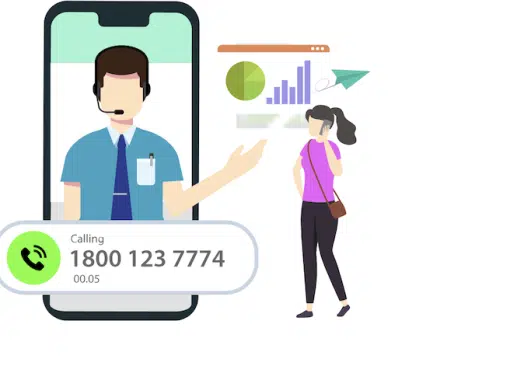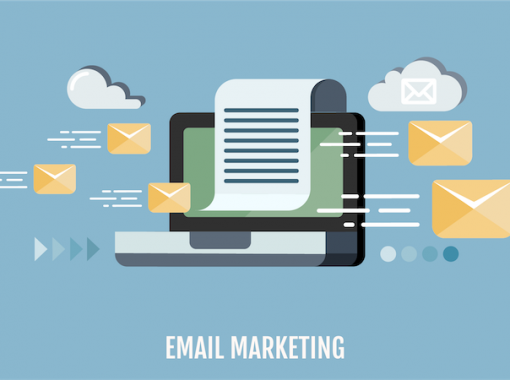
We’re a society that runs on email. We wake up and scroll through our inbox, preparing for the day ahead, and so do our customers.
Although the number continues to steadily climb, experts estimate that the average business professional receives around 121 emails per day.
This means if you’re trying to communicate with leads and prospective customers via email, chances are your messages are getting buried in their inbox.
As a sales professional, it’s your responsibility to reach out to leads and communicate with them. Sure, you can rely on the marketing team’s expertise to help coax leads to your business. But in the end, it’s your job to seal the deal.
And if you can’t get through to your leads via email, you have to find another way to communicate with prospective customers. Fortunately, there are several other avenues you can take to get your message in front of the right potential buyers.
1. Leverage Your Website
This shouldn’t come as a shocker!
Your website is your No.1 piece of online real estate and sales tool. It’s the one place online that you have total control over, so use it to speak to your leads.
As visitors land on your website, they’re scouring it for the information and content they need to make a decision. This is your opportunity to tell them about:
- Your company. Showcase the company’s leadership, history, accomplishments, and so much more. People prefer to do business with people, not corporations. This is your chance to prove there’s a team of hardworking individuals behind the shiny website. This tactic adds a “human” element to your website’s marketing and branding efforts that aids in the overall sales process, too.
- Products and services. There’s a reason visitors come to your website. They want to know more about what you offer! Instead of gatekeeping product and service information behind a long email thread, make it easily accessible on your website. This will help drive qualified leads to your business where you can take the next step and schedule a consultation call.
- Company processes or terms and conditions. From shipping restrictions to payment terms, being transparent about your company’s processes is a great way to start an effective conversation with prospective customers when they decide to contact you.
- What the next step is by giving them a Call-to-Action (CTA). Have you ever landed on a website and thought “Wow, this is great! Now what?” Be clear about what you want customers to do next, whether that’s calling you, submitting a form, or coming into the store.
Don’t forget that informative and entertaining blog content is another excellent way to communicate with prospective customers.
Your blog content not only serves as an educational tool for website visitors but also a way to convert users into potential leads. As a result, this content is an excellent way to break the ice and get visitors comfortable with your company before diving into the sales conversation.
2. Use a Chatbot
One of the main complications involved with relying on email communication is the delay in between messages. By the time you read and respond to a potential customer, they may already be in talks with your competition.
To remedy this and spark a conversation with a potential customer, take advantage of website chatbots.
Chatbots are programmed artificial intelligence that can have a full-fledged conversation with prospective customers. Companies use chatbots for tasks like:
- Helping website visitors find the information they’re searching for
- Educating visitors about available products and services
- Answering visitor questions about company details such as hours of operation, address, and more
- Handling customer inquiries or complaints that would have otherwise been buried in an email thread
Plus, it’s an excellent prospecting tool.
Your sales team can use chatbots to converse with prospective customers who are actively engaging with the website. From suggesting related blog content to scheduling sales calls, chatbots can streamline the sales conversation — all without the use of email!
3. Be Active on Social Media
Don’t be fooled into thinking social media is only for trendy B2C companies. From Facebook to TikTok to LinkedIn, there’s a social media platform out there for every company.
And, it’s a great way to communicate with leads.
In addition to sharing original and curated content with your following, social media allows companies to engage in conversations with potential and existing customers.
Start by creating and sharing social media content that gets people commenting and interacting with your posts. Each comment is a new opportunity to communicate with a prospective customer!
Be sure to respond to every social media comment — even if it’s a goofy one! These interactions build the foundation of a lasting customer relationship and can even be referenced during future conversations.
Plus, social media sites also offer messaging platforms. Interested customers use these messaging tools frequently to ask questions, receive more information, and communicate with brands they trust.
You can even hook your chatbot software up to your social media profiles and program automated responses!
4. Consider Print Marketing
Don’t underestimate the power of traditional marketing tactics like print ads!
If your audience skews older, lives in a specific geographic area, or has an affinity for outdoor and traditional advertising mediums, print marketing tactics can be the perfect way to get your message across outside of email.
And don’t limit yourself to individualized print marketing initiatives. Consider outdoor advertising opportunities like billboards, subway ads, and more. Just be sure to use a call tracking number to monitor the success of your efforts!
5. Call Your Leads!
Any sales professional knows that deals don’t happen over a cold email, they happen throughout several conversations.
While a cold email may spark a conversation, it’s not always the best way to communicate a sales pitch. And, it’s certainly not an ideal way to develop a lasting relationship with a potential customer.
Plus, for those with a much older demographic, email may not be their preferred method of communication.
Instead, calling your leads allows you to enjoy a one-on-one conversation complete with nuance, tone, and pacing — all of which can be difficult to perceive via an email message.
By opting to communicate with customers over the phone, you’re also opening your sales team up to a massive, under-utilized opportunity: call tracking and intelligence.
Call Tracking 101: A Sales Expert’s Secret Weapon
Call tracking and intelligence provide sales teams with a wealth of valuable insight about potential customers, existing customers, and their conversations.
Using a specific toll-free or vanity phone number, sales teams can discover how the lead found out about the business. For instance, if the vanity number is used on a print marketing campaign, they immediately know the customer received the flyer or pamphlet when a call comes in.
Call tracking phone numbers also include call intelligence technology. Through this software, sales professionals can access information such as:
- Customer Profiles. From demographic information to previous call activity, sales teams have every detail they could ever possibly want about a potential customer at their fingertips. And, since call intelligence software can integrate with your Customer Relationship Management (CRM) platform, every bit of lead information is available with the click of a button.
- Call Notes. Using the call notes features, sales pros can record important conversation details from previous calls. Teams can then be fully prepared by reviewing the notes before the next conversation.
- Call Recordings. Similarly, sales teams can also review call recordings in preparation for sales calls, training sessions, and other necessities. Call recordings can come in handy when information needs to be verified as well.
- In-Depth Reporting. Call intelligence offers a full suite of data for sales teams to scour through. Individual email accounts can’t provide this type of insight! From lead conversions to customer satisfaction ratings, all of this can be derived from the information provided by your call tracking and intelligence reporting.
Best of all, call tracking and call intelligence capabilities can be incorporated into the five alternative methods of communication we just discussed!
- Website. Secure a specific toll-free or vanity number for your website leads. This will provide you with the ability to fully understand how many online and offline leads are coming directly from your website.
- Chatbots. Often, website visitors will use a chatbot to find the contact information of a particular individual within the company or the customer service team. Set up a toll-free call tracking number solely for chatbot users and program the bot to provide this phone number when prompted. Then, your customer service team will know to send this lead right to the sales team when a user calls in.
- Social Media. Run a social media advertising campaign with a distinct call tracking number. Rather than encouraging viewers to make a purchase, convince them to give you a call. Then, use the call intelligence and tracking capabilities to analyze the success or failure of the campaign.
- Print Marketing. Historically, it has been difficult to quantify the success of a print marketing campaign at driving leads and sales. With a call tracking number, this frustration is a thing of the past!
Communicate with Leads Outside of Your Email Account
Although email is a necessary part of our daily lives, you don’t have to rely on it to communicate with prospective customers and capture their attention. There are plenty of other avenues to take.
In fact, diversifying your approach can be an advantageous way to gain more qualified leads. Give it a try! But make sure you’ve secured a call tracking number first.












